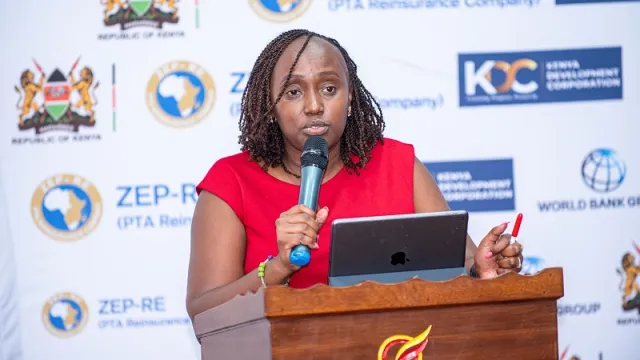Sh15 billion livestock uptake, insurance plan on to stem losses

Sh15 billion livestock uptake, insurance plan on to stem losses
Governors from 21 of Kenya’s drought-stricken counties are in talks with the ministry of agriculture and other stakeholders on implementing a World Bank-funded project aimed at mitigating livestock losses through insurance.
The State Department of Livestock is spearheading the initiative - Drive (Derisking Inclusion and Value Enhancement of Pastoral Economies) - in partnership with ZEP-RE (PTA Reinsurance Company) and the Kenya Development Corporation (KDC).
ZEP-RE will be managing a $75 million (Kes9.5 billion) fund to deliver a package combining livestock insurance and a savings bonus that pastoralists will receive through digital accounts. ZEP-RE chief executive Hope Murera said the pastoralists would contribute 20 percent and the government will support by contributing an 80 percent subsidy of the premiums for the duration of the drought.
KDC, on the other hand, will utilize its $40 million (about Kes5 billion) to buy livestock from pastoralists and reduce their exposure to potential losses even as the corporation woos capitalists to join in and boost uptake capacity.
"To solve the pastoral challenges, $40 million is not adequate; this is where KDC comes in to incentivize the private sector by investing along the value chain where we derisk investments with matching funds arrangement. This way, the opportunity to formalize the sector and position it for sustainable trade also improves," noted Norah Ratemo, KDC Acting Director-General.
Agriculture Principal Secretary Harry Kimtai said the scheme would help vulnerable herders cope with devastating dry weather. Already an estimated 2.5 million livestock have been wiped out by the current drought across Kenya.
Read also: In Kenya, ‘Nikw’a ngwete’ famine of dying while holding money unfolds
"Whereas severe drought on average affects 3.4 million people in each drought cycle in the country, the most affected regions are arid and semi-arid lands. The Drive project will focus on building the resilience of the pastoral economies by protecting against drought risk and increasing financial inclusions of pastoralists through better connections to the markets, thus facilitating trade and upgrading value chains by mobilizing private investments."
Agriculture Cabinet Secretary Mithika Linturi observed that Drive would help lower the roiling toll and damage caused by ongoing drought on Kenya’s Gross Domestic Product.
"Managing drought shocks, encouraging herders to offload animals that are ready for market, and supporting private sector investments in livestock product value chain will unlock the potential of the pastoral production system. The economic impact of floods and droughts is estimated to create an average fiscal liability of 2 percent - 2.4 percent of GDP annually," he said.
The project is designed to be a public-private partnership and according to James Sina, special financial specialist at the World Bank, "by bringing together expertise from these different sectors, the opportunities to leverage on knowledge and infrastructure from the stakeholders can bring synergy while implementing, and in the long run, providing sustainable solutions in supporting pastoral communities beyond the project funding timelines."
Drive is modeled after the Horn of Africa Initiative, which prioritizes drought insurance, enhanced trade linkages, and economic integration of pastoralist communities. The project leverages the learnings of the Kenya Livestock Insurance Program and Satellite Index Insurance for Pastoralists in Ethiopia.



